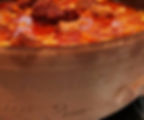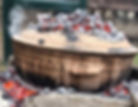Zlakusa pottery making
- Natasha
- Nov 3, 2021
- 3 min read
Zlakusa pottery making, which stands for hand-wheel pottery making in the village of Zlakusa, Serbia, refers to the superb skills and craftsmanship in the making of unglazed terracotta dishes for food boiling, cooking, roasting and such and are often used in households and restaurants across Serbia. Zlakusa terracotta earthenware was officially included in the Representative List of the Intangible Cultural Heritage of Humanity by UNESCO in 2020.

Zlakusa terracotta casseroles and earthenware pottery making is rather unique due to its texture and the technique used. Its composition is 50% clay and 50 % stone- calcite mineral. The stones and boulders used give the earthenware terracotta casseroles an even longer durability and wear and tear capacity and it allows for even bigger size casseroles to be made . The clay is dug out from the local village of Vranjani and then it is immersed into the water whereupon it is left to settle for seven days.

Photo: https://original-grncarija-zlakusa.com/ The stones and boulders are being transported from the village Rupeljevo which is located in close proximity and then it is ground afterwards so that the fine loose powder is mixed with clay. One of the master craftsmen is able to produce three to six terracotta casseroles per day. The process of making these is the same as it used to be back in the day on what is normally referred to as the wheel, where the master craftsman builds the earthenware and other types of terracotta pottery literally using one hand only whilst moving the wheel with the other hand.

Photo: https://original-grncarija-zlakusa.com/ Upon completion, the piece of pottery is to go through the drying process (up to 15 days, for the casseroles bigger in size) ; each piece is given a final touch in that they get final minute decorative details and processing and then it is prepared for the baking process at temperatures from 700 to 900 ˚C. Once the baking process is completed, each casserole goes through a thorough quality control by a master craftsman and only then is it ready to be shipped to its prospective customer. The materials used for the production and the sheer making process are 100% environmentally friendly.

PREPARATION and PRACTICAL USE The most important thing to remember are as follows –
It cannot withstand abrupt changes in temperature - each move must be slow and gradual otherwise it tends to crack or break
All the surfaces must be warmed equally
It must be dry after it has been washed using lukewarm water, a sponge and a sodium carbonate- baking soda – the drying process or to put into the oven for at least half an hour at 40 ˚C or a couple of hours in the sun and well aired room and while drying the dish and the lid should be laid aside so that the water or any liquid does not seep onto the bottom
When the dish is cooked , you either take it off the fire to check if earthenware keeps its high temperature i.e. is always hot ( both the pot and its lid) only to be put onto the wooden board- avoid putting it onto the cold concrete floor, tiles or any other cold or wet, damp or moist surfaces at any cost
Avoid at any cost washing these on all its sides and then putting them onto the source of extreme heat. You should dry the casseroles and/or lids in the way described above. A dry dish from the inside is to be covered in a thin layer of lard or oil and then the ingredients should be added to be cooked in it . It is irrelevant whether it is a thick soup/ broth being made or meat being roasted).

Hope you have enjoyed reading about ZLAKUSA terracotta earthenware and that you might decide to purchase your piece any time soon.
written , translated and submitted by Natasha from angloland.skola@gmail.com www.angloland.rs




